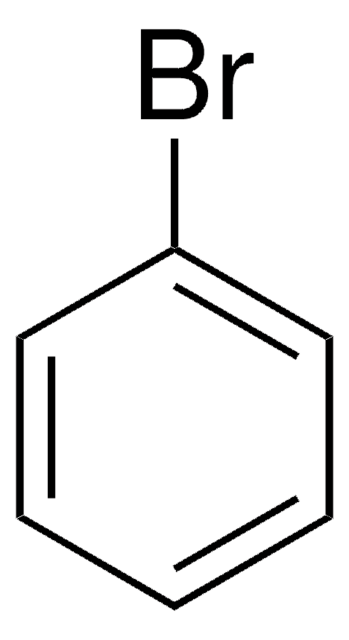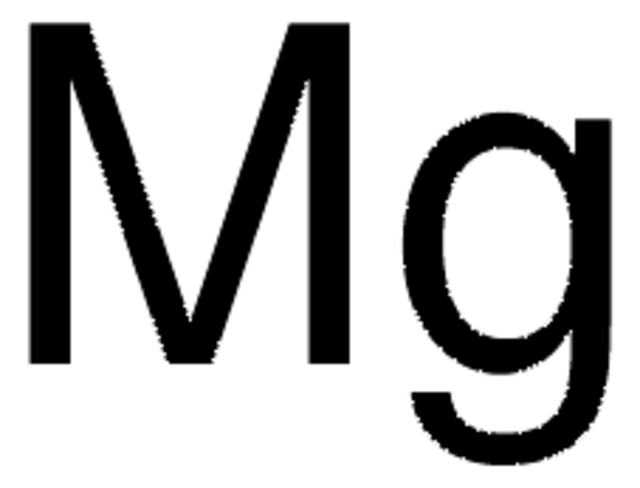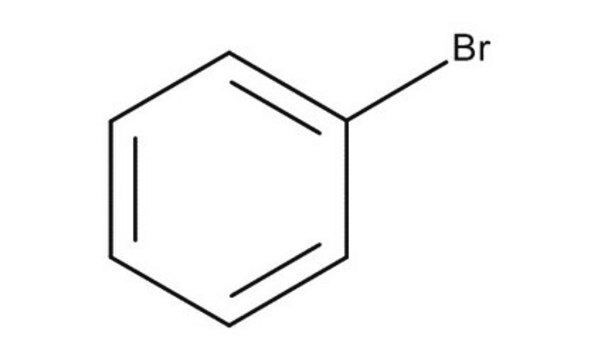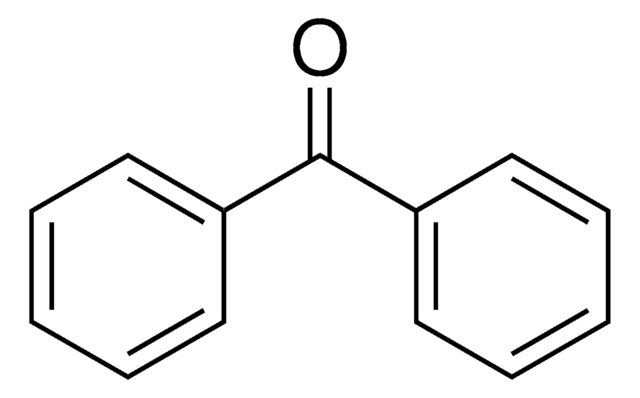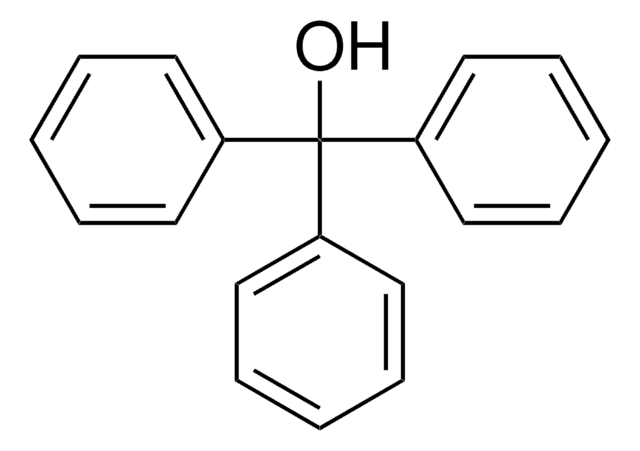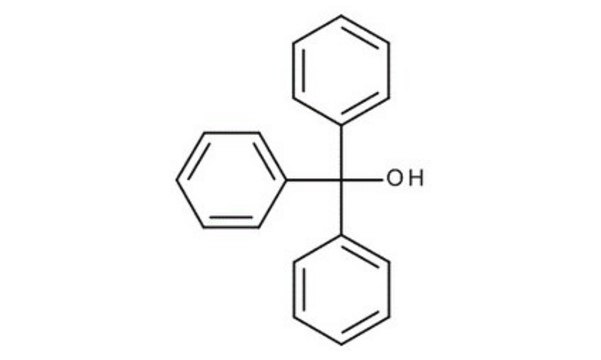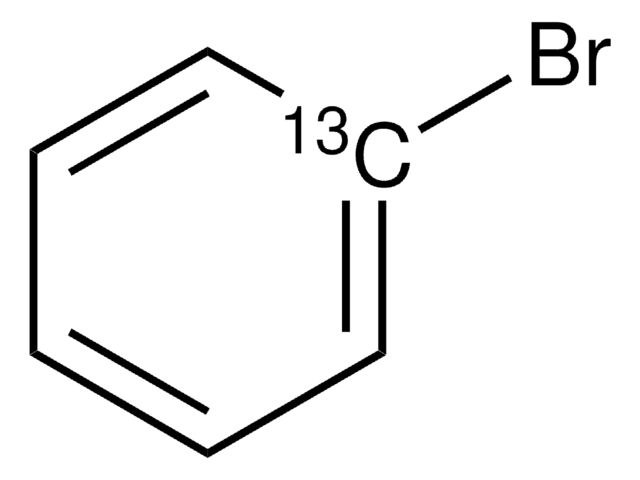B57702
Bromobenzene
ReagentPlus®, 99%
Synonym(s):
1-Bromobenzene, Bromobenzol, Monobromobenzene, Phenyl bromide
About This Item
Recommended Products
vapor density
5.41 (vs air)
Quality Level
vapor pressure
10 mmHg ( 40 °C)
product line
ReagentPlus®
assay
99%
form
liquid
autoignition temp.
1051 °F
expl. lim.
36.5 %
refractive index
n20/D 1.559 (lit.)
bp
156 °C (lit.)
mp
−31 °C (lit.)
density
1.474 g/mL at 25 °C
1.491 g/mL at 25 °C (lit.)
SMILES string
Brc1ccccc1
InChI
1S/C6H5Br/c7-6-4-2-1-3-5-6/h1-5H
InChI key
QARVLSVVCXYDNA-UHFFFAOYSA-N
Looking for similar products? Visit Product Comparison Guide
Related Categories
General description
Application
Legal Information
signalword
Warning
hcodes
Hazard Classifications
Aquatic Chronic 2 - Flam. Liq. 3 - Skin Irrit. 2
Storage Class
3 - Flammable liquids
wgk_germany
WGK 2
flash_point_f
123.8 °F - closed cup
flash_point_c
51.0 °C - closed cup
ppe
Eyeshields, Faceshields, Gloves, type ABEK (EN14387) respirator filter
Certificates of Analysis (COA)
Search for Certificates of Analysis (COA) by entering the products Lot/Batch Number. Lot and Batch Numbers can be found on a product’s label following the words ‘Lot’ or ‘Batch’.
Already Own This Product?
Find documentation for the products that you have recently purchased in the Document Library.
Customers Also Viewed
Articles
The Heck reaction is the palladium catalyzed cross-coupling reaction between alkenes and aryl or vinyl halides (or triflates) to afford substituted alkenes.
Our team of scientists has experience in all areas of research including Life Science, Material Science, Chemical Synthesis, Chromatography, Analytical and many others.
Contact Technical Service